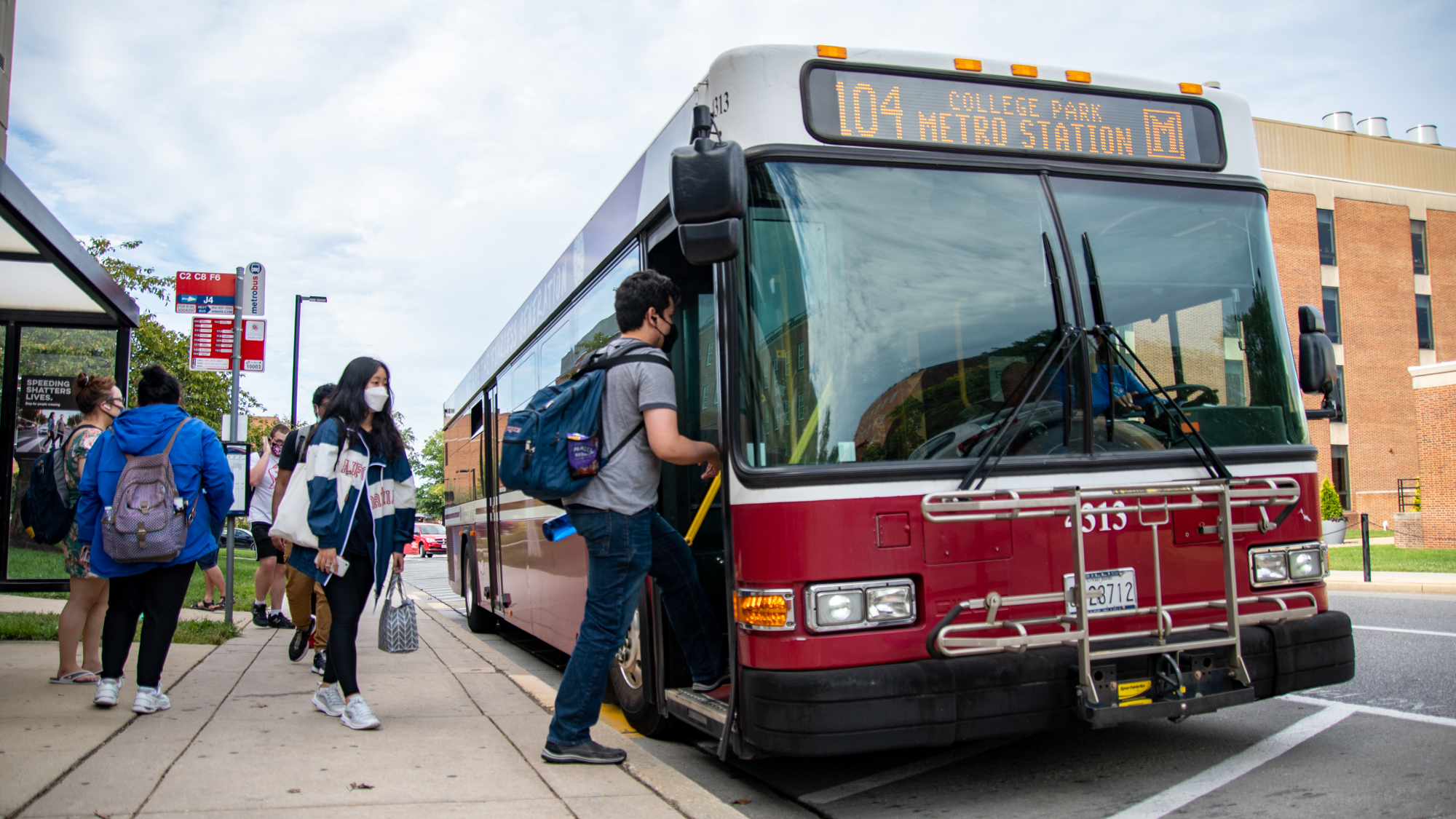Views expressed in opinion columns are the author’s own.
When my parents were children, they had to walk multiple miles to school. Thankfully, by the time I started going to school, I had school buses.
Just like school buses, student experiences should improve year by year. Helpful new services shouldn’t be cut just because previous students survived without them.
The University of Maryland Department of Transportation’s recent decision to cut 15 stops from the Shuttle-UM #104 College Park Metro bus route will have deleterious impacts on the lives of this university’s students.
The #104 took students from all over the campus to the College Park Metro Station, which connects to Washington, D.C., and the Washington metro area. Without this link to one of the nation’s most important cities — and arguably the pacemaker attached-heart of this country — we will not be able to take full advantage of a University of Maryland degree.
This university should remember its proximity to Washington, D.C., is a characteristic that potential students consider when deciding whether to attend. Personally, the ability to easily go to and from the nation’s capital is crucial to my professional plans.
While the revised route does not remove Metro access completely, many students will feel the full brunt of less safety, mobility and access to one of the nation’s best cities to start a career through a much longer commute.
If this university cares at all about the quality of education and professional development it’s selling to 40,000 students, it must create more easy access to the College Park Metro while we wait on the Purple Line connection to be completed.
The biggest issue here is safety. I did an internship last spring that was online due to COVID-19 but if it had been in person, I would’ve been going down to Washington, D.C., three times a week. Each day, I would have been arriving back at College Park around 7 p.m., which is after sunset time during the winter months. Without the #104 bus to campus, students doing an internship will be bused to the middle of campus, forcing some South Campus residents to make a roughly 20 minute walk down and uphill to their dorms. For me, a resident living on Washington Quad last year, it would have taken less time to walk from the Metro station directly.
In the dim Old Town lighting, if there was snow or ice on the sidewalks, I could have easily had an accident. In addition, there is always the reality of crime and safety-related incidents around College Park.
While I would probably not have turned down an excellent internship opportunity due to fear of being able to get home safe at night, I know friends who definitely would have. It’s incredibly unfair for students to make either of these choices between safety and educational opportunity. We are supposed to be in a safe environment where we can take advantage of opportunities to learn and prepare for future careers.
But I’m lucky I even have the option of contemplating a 20 or 15 minute walk through snow and ice. Some students with disabilities may not even have this option and for those who do, I can imagine it’s more difficult. Cutting off an entire side of campus from the bus that takes students to the Metro means further challenges for these students and a subsequent gap in their opportunities.
If this university wants to ensure equal access and opportunity for its disabled community, it must show their lives are also being considered.
These cuts may be slightly beneficial to students living on North Campus who still have #104 bus stop access and who now endure slightly shorter bus times, but this should not be seen as a sacrifice South Campus students make for their North Campus peers. No administration can reasonably defend sacrificing some students’ accessibility for the sake of others just due to where students decide to live on this vast campus.
Instead of framing this as a situation of improving some students’ mobility at the cost of others, DOTS should aspire to improve access for all students. Why not add a second bus route to the Metro station that only serves South Campus and the area around Leonardtown? This new route could potentially reinstate a few of the South Campus #104 stops or even turn the current Green Line bus service into something offered daily.
So if you’re a decision maker in the greater DOTS or university administration apparatus, you can improve student experiences by doing your jobs and figuring out a way to service South Campus and Leonardtown students.
If you’re a student, email DOTS, call DOTS, tag them on social media, maybe even tape letters to their office door. Make your voice heard and — politely — demand they help you provide yourself with the educational opportunities you came to this university for.
Jessica Ye is a junior economics and government and politics major. She can be reached at jye1@terpmail.umd.edu.



